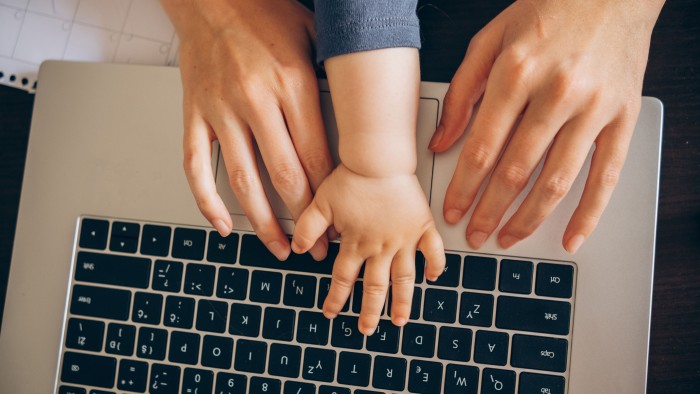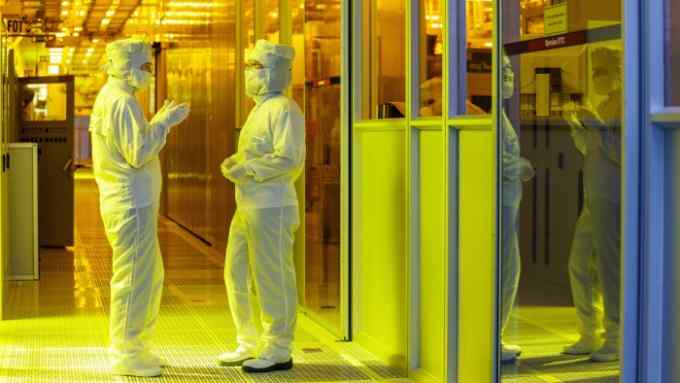FinecoBank takes on Italy’s women-in-workforce challenge

Roula Khalaf, Editor of the FT, selects her favourite stories in this weekly newsletter.
Valentina Albrizio, 37, a customer care representative at Italy’s FinecoBank, was not ready to return to full-time work when her nine-month maternity leave ended, after her son’s birth in early 2022.
Instead, Albrizio asked her employer of seven years to allow her to work part-time. FinecoBank agreed. Albrizio works five-hours a day, five days a week and is considering going back full-time in March, once her son turns two.
“For me, it was important to go back to work after having a kid — I’ve never wanted to be a full-time, stay-at-home mother,” Albrizio says. “But I didn’t want to leave my son all day in his first year. I believe it is quite shocking for a toddler to be separate from his mother eight or nine hours a day.”
Flexible working — including the ability to work remotely up to 14 days a month — are among the ways FinecoBank, Italy’s top company in the FT-Statista list of Diversity Leaders, strives to create an inclusive workplace in which staff can juggle the demands of work and family.
The online financial services company — which offers banking, brokerage and investment services to about 1.5mn mainly Italian customers — committed itself to gender equity a decade ago, as it prepared to list on Milan’s stock exchange.
“Our investors were curious about how we were managing these kinds of topics,” says Marco Longobardi, human resources director. “It’s not just about reaching the business results, but about how they are carried out.”
Getting women into the workforce, and keeping them in the labour market through their child rearing years, is a huge challenge for Italy, which has Europe’s lowest female labour force participation rate.
Only about half of Italian women aged 20 to 64 are in work or looking for work, far below the EU average of 67 per cent, according to Eurostat data. The OECD has estimated that Italy’s economy would be 14 per cent bigger if the percentage of Italian women that worked rose to the male rate. World Bank figures put workforce participation among Italian men at 58 per cent.
For many Italian women, childbirth is the key factor. A recent report estimates 18 per cent of Italian women now between the ages of 18 and 49 left their jobs after giving birth. About half of those said they lacked sufficient support to stay in jobs, given the shortage of affordable, reliable childcare services.
“Many of them leave the jobs because other women — who became mothers before them — tell them that it is really hard to keep everything together and to keep on working,” says economist Azzurra Rinaldi, at the University of Rome Unitelma Sapienza.
About 30 per cent said they were pushed out of their jobs by employers, as many of Italy’s legion of small, family-owned businesses consider new mothers a burden to their companies.
Italian authorities are trying to change such attitudes. As part of its €200bn, EU-funded post-Covid reform and investment programme, the government has launched a gender equality certification system — to encourage businesses to integrate gender equity goals into their operations.
The voluntary certification system assesses performance on metrics such as culture and strategy, governance, human resources and management processes, gender pay equity, parental protection and work- life balance. Certified companies are eligible for tax breaks and extra points in bidding for public contracts.
“For the first time in many cases, companies are collecting data by gender,” says Rinaldi. “They know — for the first time — who is leaving and who they are hiring, and they can see that maybe they have a problem.”
FinecoBank says its gender equity policy commits to an environment that gives “all colleagues an opportunity to realise their potential”. It has had a designated diversity manager since 2017.
Of FinecoBank’s 1,279 employees, about 42 per cent are women. Italy’s shortage of female IT workers has obstructed the achievement of full parity, as IT accounts for 17 per cent of the company’s total workforce.
The 11-member board counts seven women. But, while women hold 35 to 40 per cent of management jobs, they occupy just 20 per cent of top management roles. “We want a balanced leadership pipeline, where both men and women are equally represented,” Longobardi says.
Of the 23 women whose maternity leave ended in 2022, 13 per cent opted to come back part time — at least initially — to help their transition back to work, the company says.
Former co-director of investor relations Franca Cavalieri D’Oro, 39, mother of a two-year-old son, came back to work when he was just five months, then opted to work part-time until he was one. In addition to the part-time work option, Cavalieri D’Oro, who now oversees sustainability initiatives, says FinecoBank’s new hybrid working model — developed after the pandemic as Italy reeled from soaring energy prices — has improved work-life balance. The company’s Milan headquarters has only a core team present on Mondays and Fridays, while others work remotely. Employees can work remotely up to 14 days a month, while disabled workers can opt for full remote working.
Cavalieri D’Oro says such flexibility eases pressures on families. Being able to work from home “is helping me a lot . . . I can save time travelling and getting ready to work, and dedicate more time to my baby’s needs”.

Comments